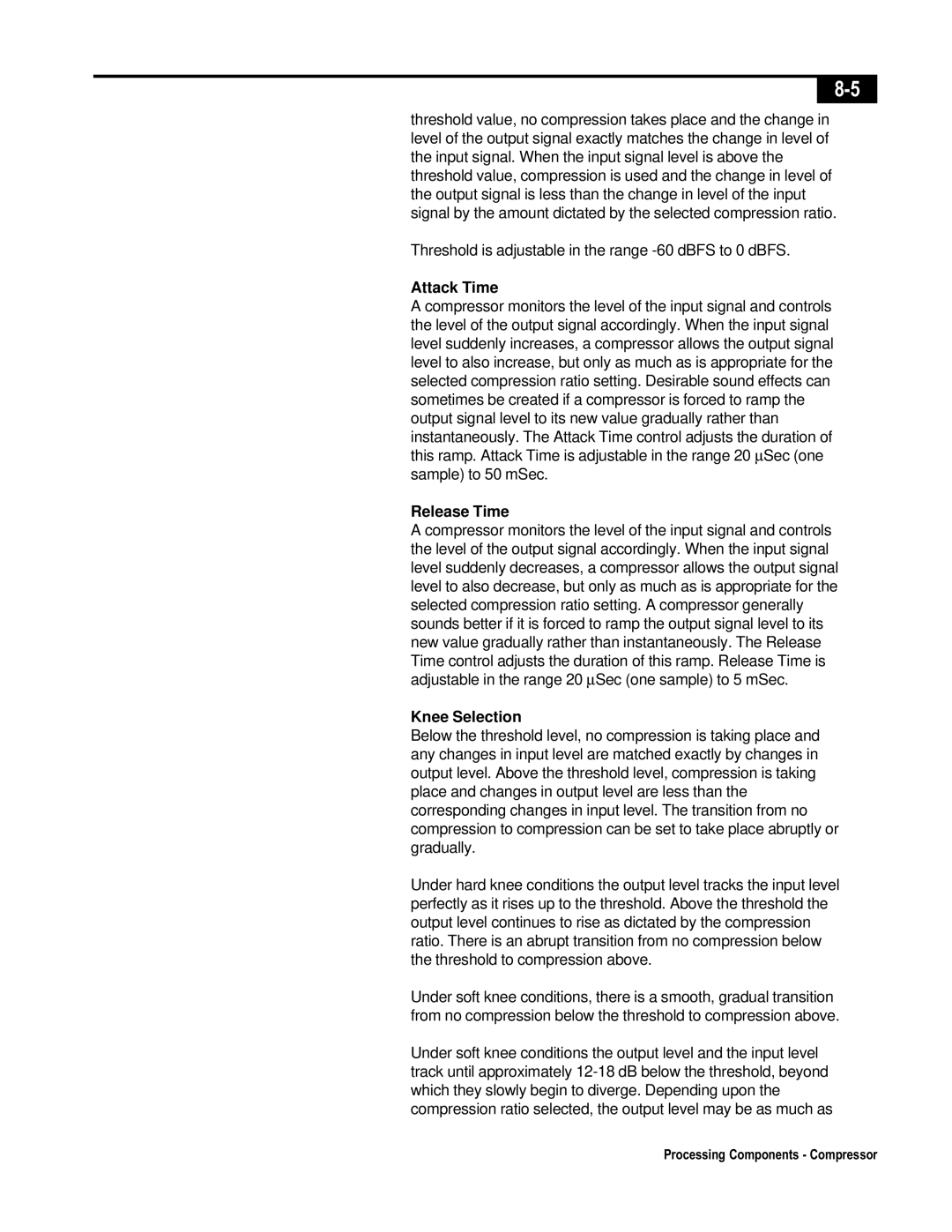threshold value, no compression takes place and the change in level of the output signal exactly matches the change in level of the input signal. When the input signal level is above the threshold value, compression is used and the change in level of the output signal is less than the change in level of the input signal by the amount dictated by the selected compression ratio.
Threshold is adjustable in the range
Attack Time
A compressor monitors the level of the input signal and controls the level of the output signal accordingly. When the input signal level suddenly increases, a compressor allows the output signal level to also increase, but only as much as is appropriate for the selected compression ratio setting. Desirable sound effects can sometimes be created if a compressor is forced to ramp the output signal level to its new value gradually rather than instantaneously. The Attack Time control adjusts the duration of this ramp. Attack Time is adjustable in the range 20 μSec (one sample) to 50 mSec.
Release Time
A compressor monitors the level of the input signal and controls the level of the output signal accordingly. When the input signal level suddenly decreases, a compressor allows the output signal level to also decrease, but only as much as is appropriate for the selected compression ratio setting. A compressor generally sounds better if it is forced to ramp the output signal level to its new value gradually rather than instantaneously. The Release Time control adjusts the duration of this ramp. Release Time is adjustable in the range 20 μSec (one sample) to 5 mSec.
Knee Selection
Below the threshold level, no compression is taking place and any changes in input level are matched exactly by changes in output level. Above the threshold level, compression is taking place and changes in output level are less than the corresponding changes in input level. The transition from no compression to compression can be set to take place abruptly or gradually.
Under hard knee conditions the output level tracks the input level perfectly as it rises up to the threshold. Above the threshold the output level continues to rise as dictated by the compression ratio. There is an abrupt transition from no compression below the threshold to compression above.
Under soft knee conditions, there is a smooth, gradual transition from no compression below the threshold to compression above.
Under soft knee conditions the output level and the input level track until approximately
Processing Components - Compressor
